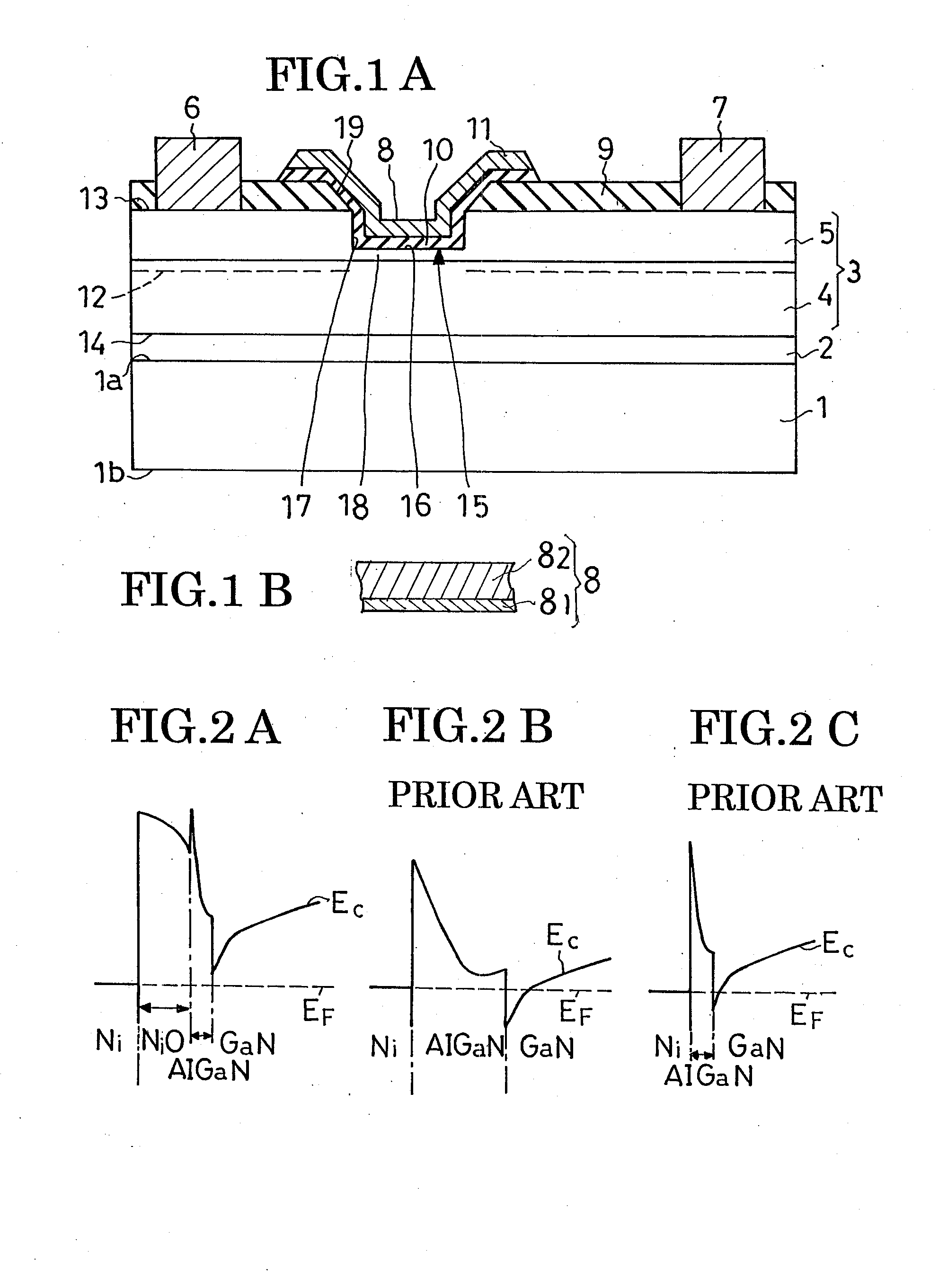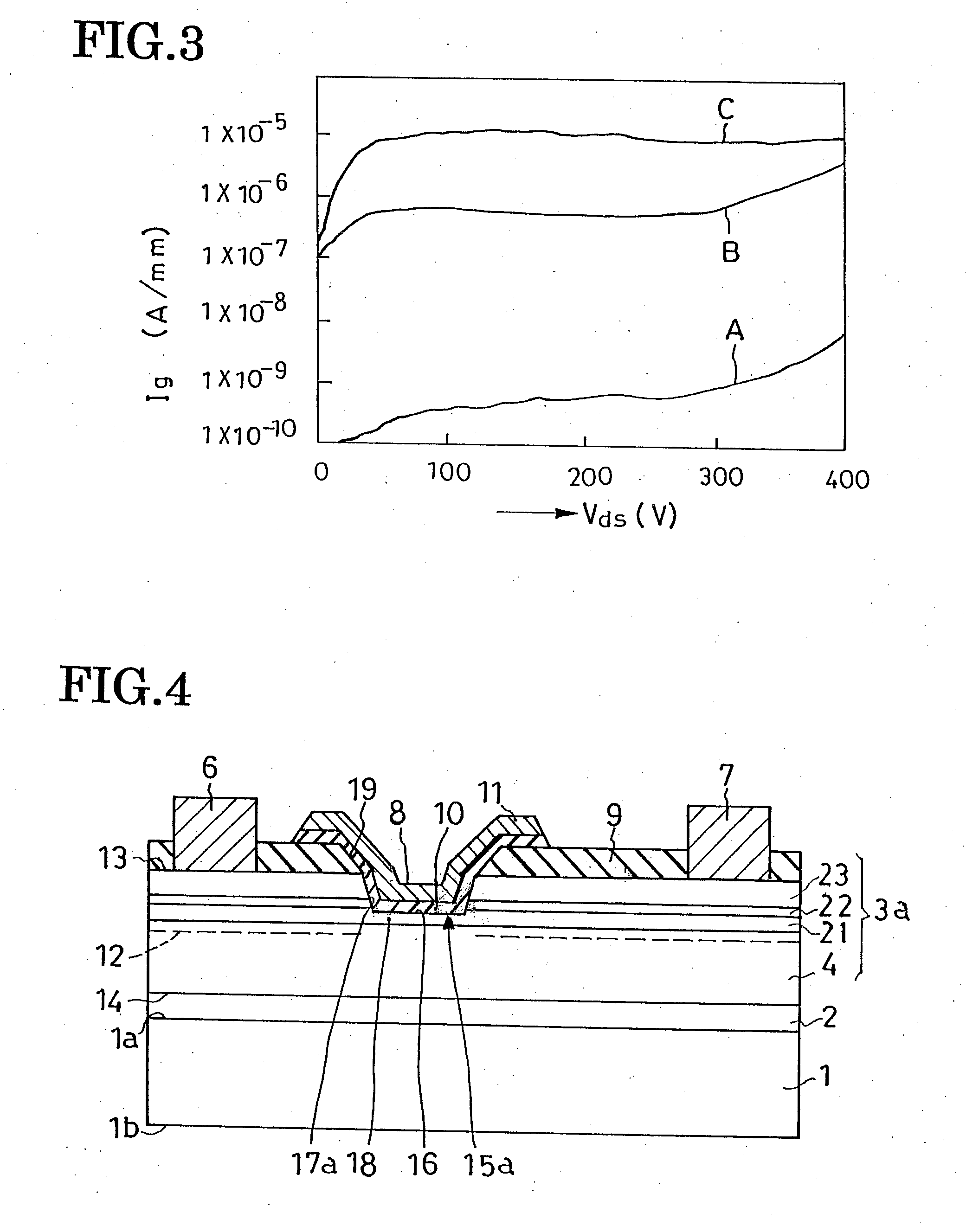Field-Effect Semiconductor Device, and Method of Fabrication
a field-effect semiconductor and semiconductor technology, applied in semiconductor devices, semiconductor/solid-state device details, electrical apparatus, etc., can solve the problems of easy noise triggering, inconvenient use of conventional normally-on hemts, and unnecessary associated circuitry, so as to prevent current collapse, reduce current leakage, and save the two-dimensional carrier gas layer
- Summary
- Abstract
- Description
- Claims
- Application Information
AI Technical Summary
Benefits of technology
Problems solved by technology
Method used
Image
Examples
embodiment
of FIG. 7
[0139]This embodiment is akin to that of FIG. 4 except for the main semiconductor region 3b. This main semiconductor region 3b, then, is similar to its FIG. 4 counterpart 3a except for the absence of the third electron supply layer 23, having the remaining two electron supply layers 21 and 22′ deposited one after the other on the electron transit layer 4. The first electron supply layer 21 is of the same make as that indicated by the same numeral in FIG. 4. The second electron supply layer 22′ is the same as its FIG. 4 counterpart except being thicker, being 10-150 nanometers, preferably about 18 nanometers, thick.
[0140]Having the two electron supply layers 21 and 22′ of the same compositions as their FIG. 4 counterparts 21 and 22, this embodiment possesses the same benefits as does that of FIG. 4 except those accruing from the third electron supply layer 23. The material of the second electron supply layer 22′ is alterable into a semiconducting nitride not doped with silic...
PUM
 Login to View More
Login to View More Abstract
Description
Claims
Application Information
 Login to View More
Login to View More - R&D
- Intellectual Property
- Life Sciences
- Materials
- Tech Scout
- Unparalleled Data Quality
- Higher Quality Content
- 60% Fewer Hallucinations
Browse by: Latest US Patents, China's latest patents, Technical Efficacy Thesaurus, Application Domain, Technology Topic, Popular Technical Reports.
© 2025 PatSnap. All rights reserved.Legal|Privacy policy|Modern Slavery Act Transparency Statement|Sitemap|About US| Contact US: help@patsnap.com



